 Ensuring Co Alarm Compliance in Rentals
Ensuring Co Alarm Compliance in Rentals
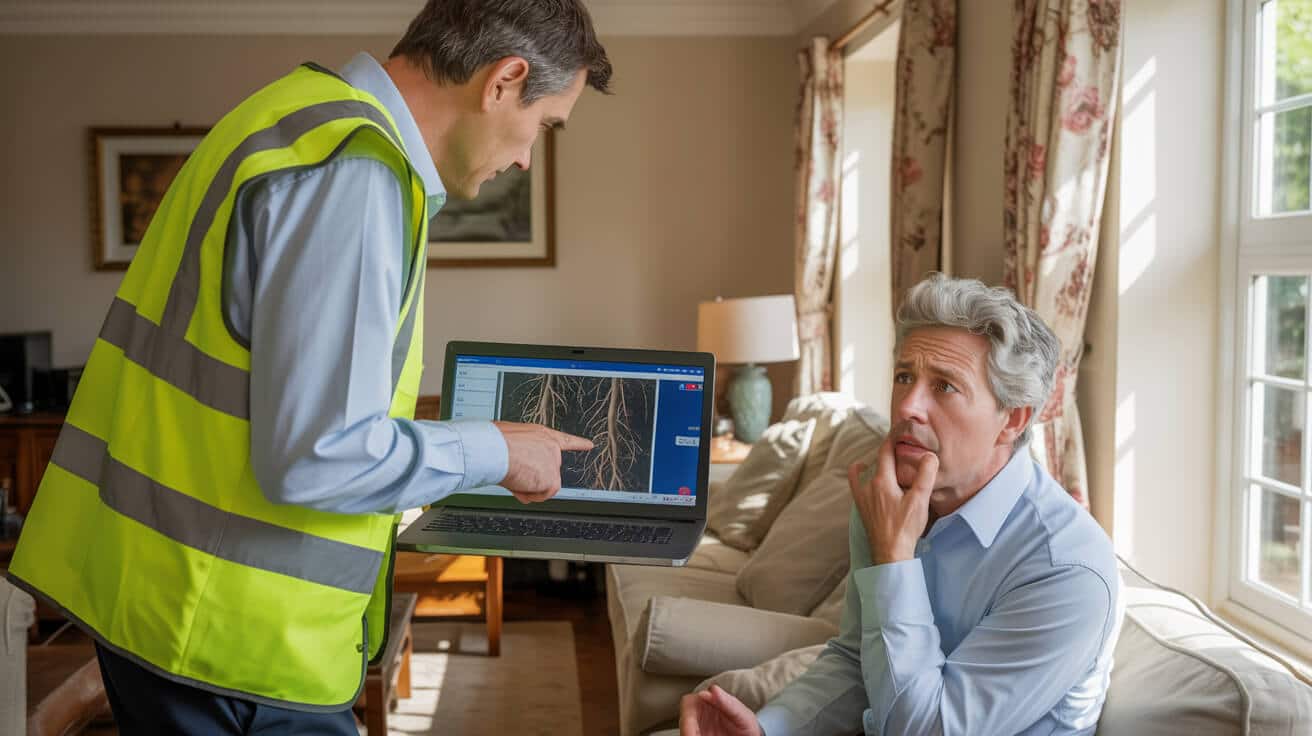
Are CO Alarm Laws Really Universal in UK Rentals—Or Are There Hidden Gaps?
CO alarm rules are headline news across the UK letting sector, yet confusion never seems to fade—especially once you face the council’s paperwork or a tenant’s sharp question. Anyone managing or owning rental property now sits within a nationwide compliance net: every UK tenancy with a fixed combustion appliance must have a compliant, working CO alarm at every required point. There aren’t carve-outs for small landlords or “part-time” lets. Whether you oversee a single flat, a council block, new build, or student home, the law sees the risk, not the owner.
Paperwork shows your compliance before the risk ever does. Gaps in evidence—not just missing devices—sink good landlords.
So, is the legislation really airtight? Mostly. The latest rules ending in 2022 left little room for doubt: once a property qualifies as a let under tenancy law, CO coverage is non-negotiable—and proof is your burden. Yet grey areas and quiet missteps still pop up. Lofts with a lone boiler, annexes, converted garages, and even basement rooms sometimes slip the landlord’s mind. Enforcement leans heavily on evidence—a council’s main focus is whether you can show compliant alarms, test records, and up-to-date logs for every fixed combustion appliance, regardless of how hidden the device is or how rarely it’s used.
Where the Gaps Still Haunt Vigilant Property Managers
letting agents and managing agents, once shielded by “we didn’t instal it,” now share accountability for audit trails. The joint risk? If paperwork or device placement misses a trick—especially between tenancy changeovers or after a silent boiler swap—you may be left exposed. The “grey” is no longer the law, it’s the documentation and diligence required to prove you’re following it.
Bottom line: UK CO alarm law is universal in scope, but only airtight when your proof is as robust as your presence on site.
Do CO Alarm Rules Cover Every Rental, or Are Some Homes Still on the Sidelines?
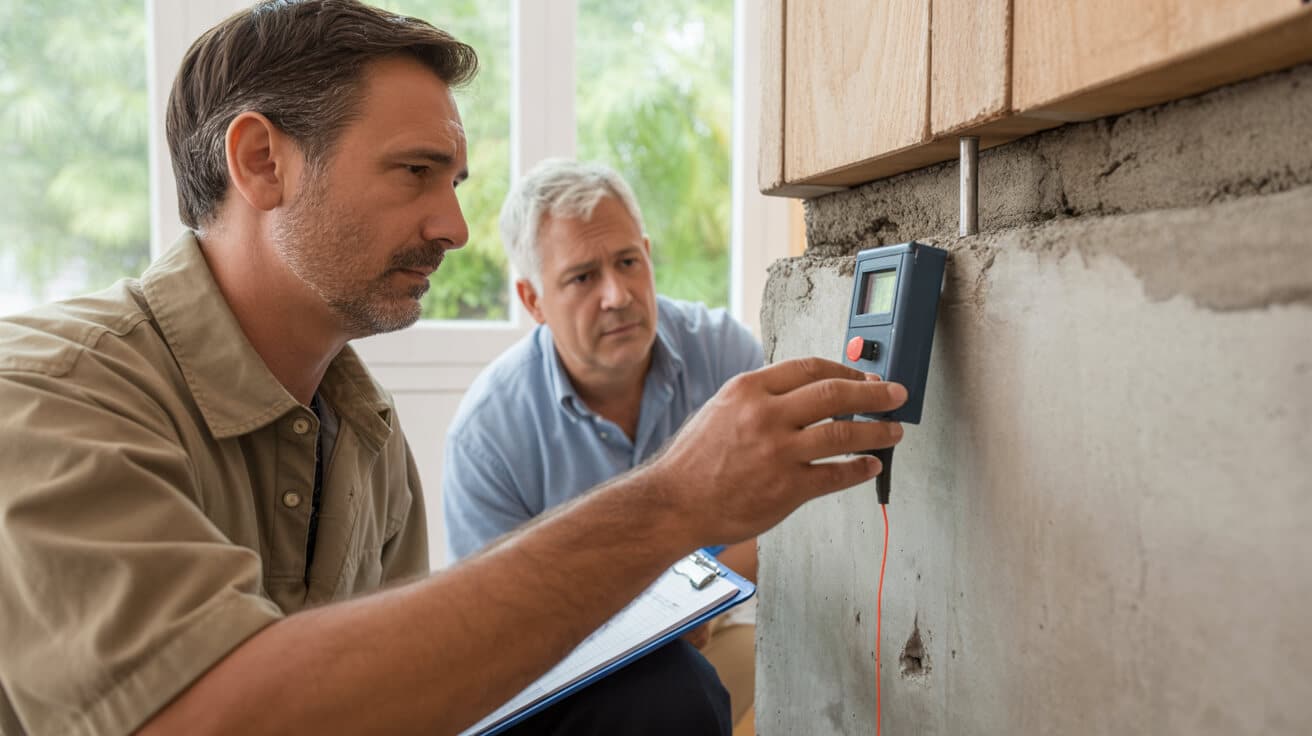
The clearest test for legal duty: “Is the property let under a tenancy?” If so, the default is “yes, you’re covered.” The law does not make exceptions by size, ownership style, or let duration. Bedsits, new builds, conversions, HMOs, student houses, council properties, and holiday lets all fall under the umbrella. The only real exceptions are rare: holiday-only arrangements clearly not covered by tenancy law, or properties where not a single fixed combustion appliance exists—a logistical outlier in most housing.
Don’t assume anything outside of tenancy is exempt. Nearly every common template—AST, licence, HMO, council lease—locks in your duty to provide working CO alarms.
Local Licencing Schemes Dial Up the Pressure
Properties subject to HMO or additional licencing schemes are held to even stricter standards. Many councils overlay their own requirements, which include routine annual checks, prescribed alarm positioning, and forced inclusion of modern sealed-unit alarms—even for flats with only a decorative fireplace or capped-off gas fire.
Agent insight: council enforcement rarely accepts “last tenancy” logic (“We hadn’t changed anything since last time”). If you’re licenced, you’ll need to produce up-to-date evidence for every tenancy, not just the last compliant cycle.
There’s Nowhere to Hide—And That’s on Purpose
Even short-term lets and sublets are swept in, and risk-based logic prevails: If risk exists, expect the council to require CO coverage. In edge cases, err on the side of alarm installation and document everything.
Which Appliances Trigger a CO Alarm Requirement—and Where Do People Slip Up?

The law is built around fixed combustion appliances, which includes any device which required professional installation because of a flue or fuel connection. This covers all:
- Gas or oil boilers (including those hidden in lofts or cupboards)
- Wall-mounted or room-sealed gas heaters (even purely decorative ones)
- Solid-fuel stoves, pellet burners, open fires (working, capped, or rarely used)
It’s the fixed device that creates the duty—not usage pattern, age, or appearance. Dormant ‘capped’ gas fires, disused open fireplaces, and tucked-away boilers all count.
The “Just a Cooker” Myth—When Exemptions Don’t Excuse Lax Safety
Standard gas cookers and hobs operating alone usually escape statutory CO alarm duty—unless the setup includes a built-in grill operating as a fixed combustion appliance, or unless local authority licencing demands more (as is increasingly common for HMOs and city flats). Similarly, portable LPG heaters and tenant-supplied plug-in appliances are formally out of national scope—but landlords are expected to warn tenants about added risk from these extras, especially in property handbooks or check-in records.
Hidden risk: Most penalties and insurance claim denials start not from an uncovered device, but from ambiguous paperwork or failure to recognise that an old, “dead” appliance still creates an alarm duty unless fully removed and declared.
What Actually Makes a CO Alarm Legally Compliant in a UK Rental?
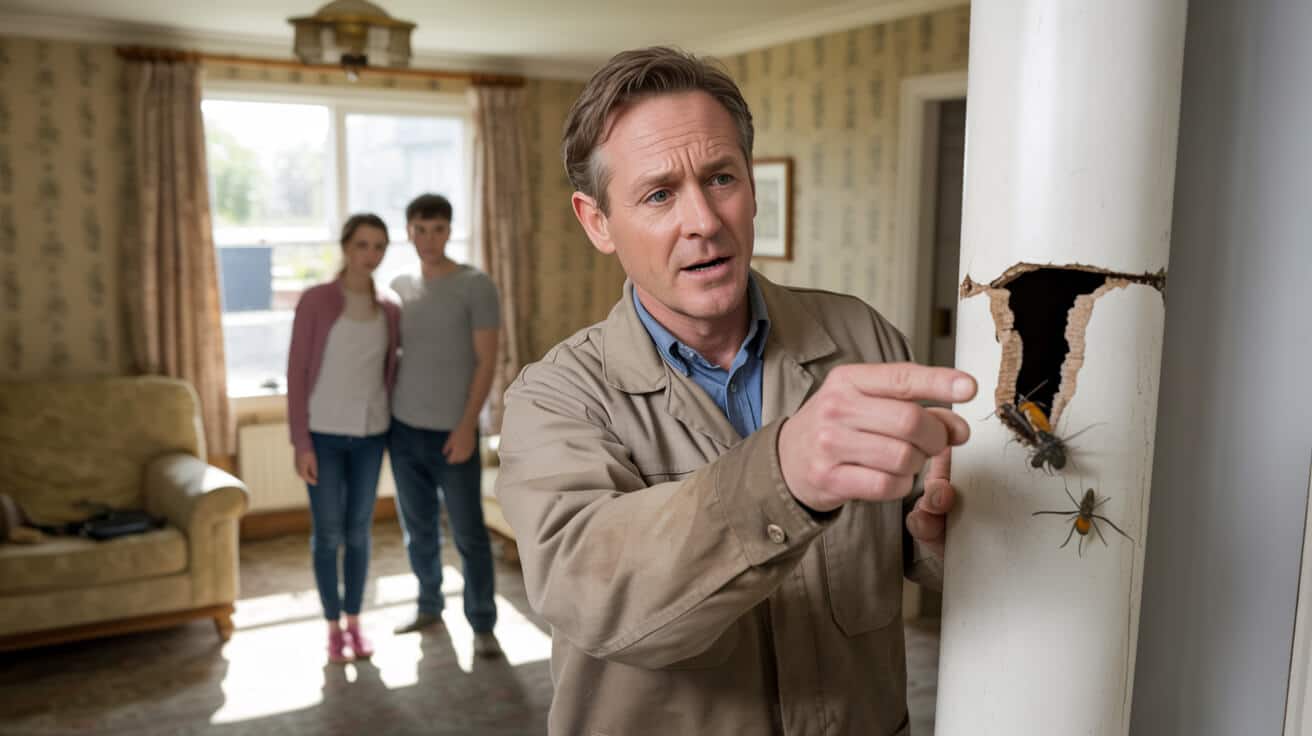
It’s not enough to hang “any CO detector” from the nearest wall. Legal compliance is pinned to:
- Device Marking: Only alarms certified BS EN 50291-1 (visible on device and box) are legal for rental properties.
- Combo Devices: If installing a combined smoke/CO alarm, it must show both BS EN 50291-1 *and* BS EN 14604.
- Expiry Dates: Document and prove the expiry date—alarms are valid only while in-date.
- Tenant vs. Landlord Supplied: Only the landlord’s (or agent’s) device, correctly marked and logged, satisfies legal duty. Self-bought tenant devices don’t count for audit.
If you can’t show photographic proof and a digital log for every approved alarm, you’re wide open to enforcement—even if the device is present and working. *(BSI, 2023)*
Placement and Testing: Don’t Trick Yourself Into Thin Compliance
- Instal at head height, within 1–3 metres of the appliance (horizontal/vertical alignment accepted per manufacturer guidelines)
- Avoid behind doors, curtains, or in cupboards—free airflow is essential
- Log every installation with a close-up photo, context shot showing position, and serial/expiry detail, all referenced to property address, room, and date
- Test at check-in/changeover with the tenant present, recording that proof (ideally with digital acknowledgement or photo evidence)
Modern property management apps can automate this log (time stamp, GPS, engineer sign-off). For independent landlords, clear folder organisation is critical.
When Should Landlords and Agents Act—And What’s the Legal “Red Line” for Action?
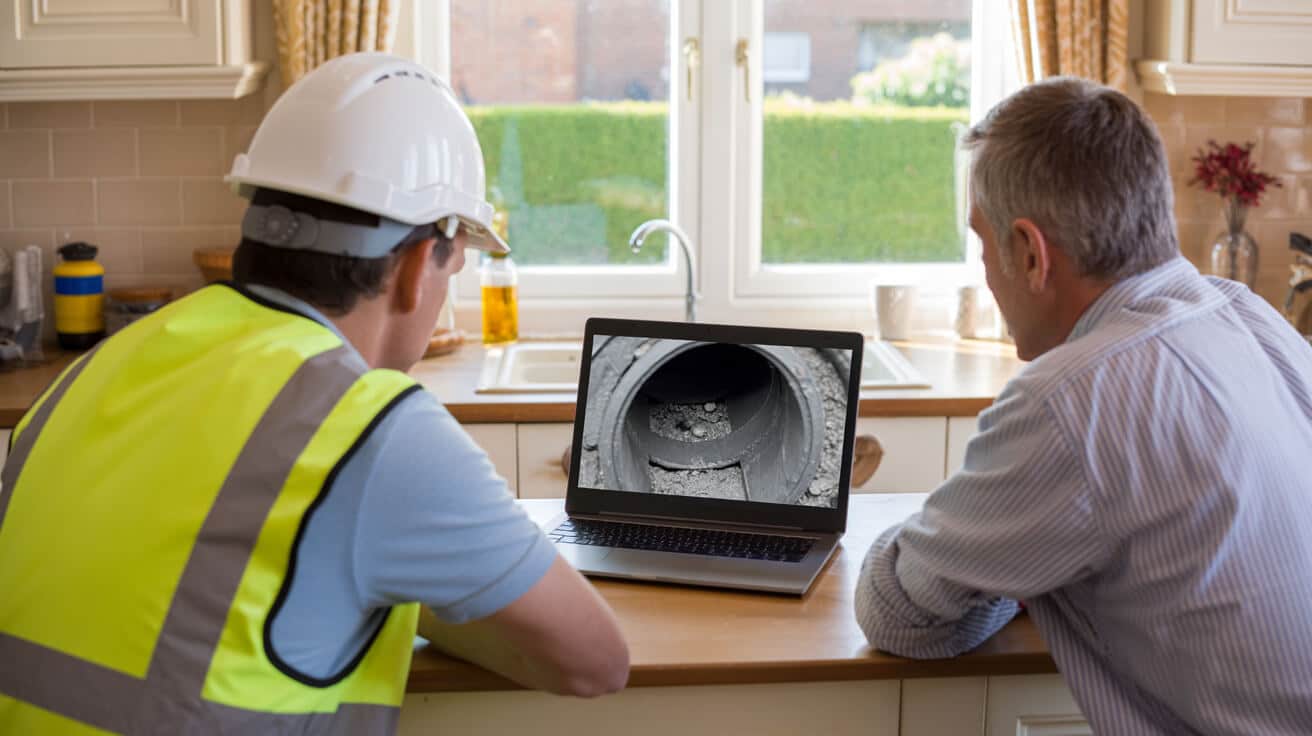
The strict line: At any new tenancy, renewal, or tenant changeover, alarms must be present, working, and evidenced. Failure to act, slow replacement, or incomplete evidence is penalised as “non-compliance”, even if tenants have never complained or incident rates are low.
Most legal fails aren’t about missing alarms—they’re about missing, unverified, or expired paperwork when the audit hits. *(gov.uk, 2023)*
Enforcement Hotspots That Trip Up Good Landlords
- Expired alarms or unlogged replacements count as no coverage at all
- Lapsed annual tests or unscheduled inspections: councils now audit on a “Show me your log” basis
- Overlooked devices in secondary rooms, extensions, or lofts (“out of sight” isn’t “out of law”)
- Incidents of tenant tampering—if not swiftly documented and rectified, these fall on the landlord for legal fault
Every report of a faulty alarm, disconnected battery, or expired device must trigger a documented response “as soon as reasonably practicable”. In practice, that means evidence within days, not weeks, and a clear trail showing every attempt to resolve.
What Are the Hidden Costs and Penalties of CO Non-Compliance in UK Rentals?
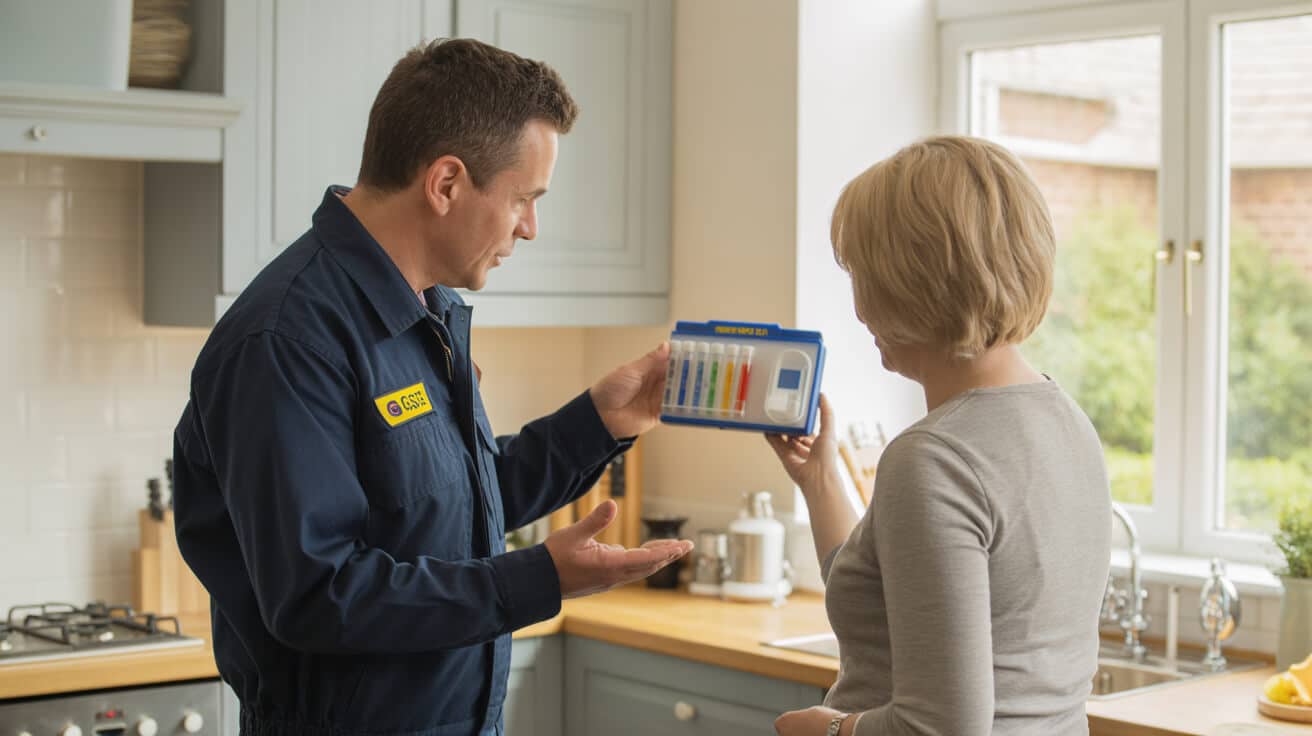
Fines aren’t hypothetical. Councils routinely enforce up to £5,000 per incident, and a single error can multiply across a portfolio fast. Tribunals use Rent Repayment Orders (RROs) to force back payments of up to 12 months’ rent. The first thing insurers do after a CO incident? They ask for full logbook evidence—no log, no payout, even if the device worked.
Nearly every denial or penalty comes from ‘lost evidence’—that 18-month-old instal with no follow-up photo or expiry note. Lawyers look for gaps, not gadgets. *(Shelter, 2023)*
The Cost Pyramid: What Really Stings Landlords and Property Managers
- Direct council fines—imposed after spot inspection, complaint, or failure to produce evidence on request
- Rent repayment orders and legal costs—faster in HMO and council-licenced markets
- Insurance claim denials—lack of compliant documentation blocks property cover
- Stress, administrative cost, and lost time—when you scramble for proof, *every hour costs more than a replacement alarm ever would*
How to Document, Prove and “Lock In” CO Compliance—Not Merely Hope for the Best

True compliance is evidenced—not just “done”. That means your process covers every lifecycle step:
- Template-driven logs: Use NRLA, ARLA, or agent-provided digital logbooks for every property and room
- Serial/expiry record-keeping: Log every device, location, and expiry date—not just instal date
- Evidence chain: Photos (device, box/cert, room context), logs, and tenant/engineer sign-off
- Annual test logs: Make annual checklists routine (and automated when possible)
- Changeover drill: Each new tenant brings a test, a log, a signature, and proof—anything less leaves you open
A device in the cupboard is invisible to audit. A photo, a log, and a test are the gold standard—tenancy or agent, council or insurance, can’t poke holes in it.” *(Shelter 2023)*
Uncomplicated digital logs, engineer walk-downs, and consistent renewal reminders render surprise audits a non-event. Paper-based landlords can reach this standard using free or low-cost log templates and cloud storage—run it like a business, not a lottery.
How Does Plumbers 4U Make CO Compliance Practical and Bulletproof for Landlords, Agents, and Councils?
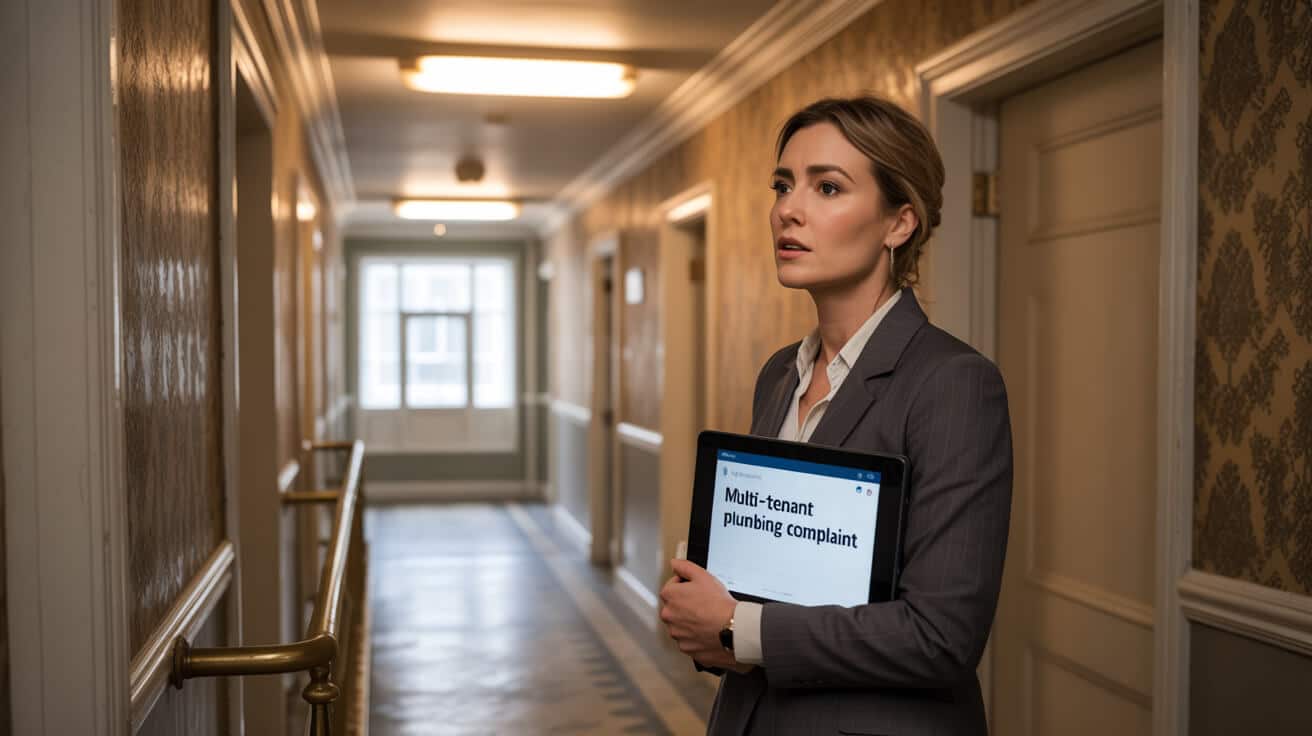
CO compliance shouldn’t be a stress marathon or depend on memory. Plumbers 4U takes the “guesswork and paperwork” out of the process—both for single property owners and multi-site portfolios:
- Audit-Ready Installations: WRAS and G3-certified engineers catch every fixed device on a property walk-down, including quirky placements and forgotten outbuildings—not just the “usual suspects” in kitchens and lounges
- Device Verification: Only BS EN 50291-1 (for CO) and BS EN 14604 (for combo) units installed—expiry and certification visible, no market-roulette or questionable off-the-shelf alarms
- Full Paper Trail: Each alarm is photographed (with visible certification, expiry, and room context), serial logged, date-stamped, and tied to its specific address and room
- Agent-Ready Reporting: Both digital and hard copy logs, pre-filled for your agency or managing software, keep you ready for every audit request
- Ongoing Service: Scheduled reminders for retests, annual checks, and proactive unit replacement mean deadlines aren’t “remembered” but systematised
You can show an audit-ready log or tenant-facing photo at a moment’s notice, not after a panic—portfolio or single let, the same no-fuss process applies.
For institutional landlords, letting agents, or council portfolios, a single point of contact at Plumbers 4U locks in every standard, handles all documentation, and reduces last-minute admin—so you’re viewed as a true compliance leader by tenants, regulators, and repair teams alike.
What’s the Real Payoff for Landlords, Agents, and Councils That Nail CO Compliance?
The reward isn’t just avoiding the feared £5,000 fine. It’s the clarity, stress relief, and credibility that comes when you know, in seconds, that every device is compliant, every room is logged, and any audit or incident will be met head-on and handed over—not chased with last-minute emails or lost paperwork.
Landlord, agent, or council, your reputation can rise or fall on whether you get compliance right without drama. The market is increasingly shaping around reliable, documented safety—not just running the minimum. Tenants and partner agencies notice when you’re a step ahead.
When you treat compliance as a lock-in, not a burden, tenants trust faster, agents praise you, and councils move on to real risks, not paperwork hunts.
By systemising your compliance—whether you use Plumbers 4U’s all-in-one service or replicate the recommended log chain—the headaches from surprise inspections, claim snags, or tenant disputes fade. Security, relief, and reputation combine as your new norm.
Take CO Compliance Off Your Worry List—Book Plumbers 4U for Peace of Mind That’s Proven
Every week without bulletproof compliance is a week exposed to fines, claim denials, and avoidable disputes. Why wait for a letter from the council or an angry tenant before taking action? Book Plumbers 4U today to put CO compliance on autopilot—not just for this audit, but every year going forward.
Your next audit is already answered. Your alarms are verified, installed, certified, and logged. Your properties are evidence-ready 24/7. Whether you own a single flat or manage a thousand properties, make CO safety a solved problem—with zero guesswork or gaps.
Don’t run the risk. When the paperwork, the proof, and the property line up—every audit becomes a predictable, pain-free event.
Get in touch with Plumbers 4U—it’s your shortcut to compliance confidence, audit calm, and a property portfolio that inspires trust instead of anxiety.
Frequently Asked Questions
What defines landlord responsibility for CO alarms in UK rented property today—and why does evidence now matter as much as action?
Landlord CO alarm obligations in the UK now demand not only correct installation but airtight, time-stamped proof of compliance at every tenancy event.
It’s no longer enough to buy an alarm and fit it “somewhere close”—housing law since 2022 enforces a paper trail for every decision: approved alarm, correct placement, expiry record, and tenant acknowledgement. Fail to log or maintain any element and you’re facing instant penalty notices, and insurance policies are increasingly voided by the first slip in your register.
Compliance gaps aren’t theoretical. Every incomplete step—wrong device, missing signature, vague paperwork—puts your portfolio and business standing directly at risk.
Landlords must go beyond the minimum: audit every room for fixed combustion sources (ignore only gas hobs), include airing cupboards, annexes, or converted spaces, and document physical placement. Letting agents and portfolio managers are expected to store digital and photographic logs, chain these to each renewal or new tenancy, and keep all records accessible for spot inspections or disputes. The difference now is forensic enforcement: fines routinely land within weeks, and councils show zero leniency once an error is logged.
If you rely on informal checks or sporadic reminders, expect a rude awakening. Council mystery audits and tenant watchdog complaints are now routine—especially in urban boroughs and high-density blocks. It’s only the landlords with a WRAS-registered installation partner and a seamless audit trail who can prove not just intent, but bulletproof practice.
Choose to run ahead of the law—let compliance be a selling point and not an annual stress. With documented instal, tenant confirmation, and ongoing digital evidence from Plumbers 4U, you hold the keys to audit immunity and reputation gain.
Raise the standard—convert regulatory risk into a clear, operational advantage by partnering with a team known for end-to-end compliance and landlord protection.
How do device standards for CO, smoke, and heat alarms differ—and why do most council fines come from missing certificates, not missing alarms?
CO, smoke, and heat alarms work to save lives—but only specific, officially certified products pass council or insurer scrutiny after 2022.
CO alarms in UK rentals must display BS EN 50291-1 compliance; smoke alarms need BS EN 14604; heat alarms (for kitchens) follow BS EN 5446-2. Combo or imported devices without clear, third-party approval for both functions routinely get flagged or rejected at inspection.
Audit data shows most enforcement fines aren’t from lack of alarms, but from cheap models or uncertified units with poor documentation—details missed in a rush, not in bad faith.
Tenants and authorities increasingly expect all units to be sourced from WRAS- or G3-accredited suppliers, carrying branded, tamper-proof certificates and visible expiry dates. Bulk-buy “deals” or unverified brands may tempt, but leave properties open to both compliance breach and insurance exclusion.
Landlords who upgrade to a professional procurement path—where every device comes photographed, serialised, and with matching paperwork—move out of the audit risk zone. Plumbers 4U use only certified models, issue instal documents per property, and handle the digital compliance chain required by portfolio insurers and council officers. It’s the difference between passing inspection in minutes or paying out weeks of rent as a penalty for a missing mark or expired alarm.
| Device | Certifying Standard | Documentation Must-Have |
|---|---|---|
| CO Alarm | BS EN 50291-1 | Device badge & record |
| Smoke Alarm | BS EN 14604 | Certificate visible |
| Heat Detector (Kitchen) | BS EN 5446-2 | Only for kitchen use |
| Combo Alarm | Both above, marked | Proof for both |
Best practice: keep model certificates, instal logs, and expiry calendars at the ready for each address and tenancy. This underwrites confidence in front of council, agent, or tenant queries.
Set yourself apart—never cut corners or risk fines by relying on uncertain sourcing. Ensure every property receives certified, properly logged alarms, and let your next inspection verify your leadership, not expose a weakness.
Where should CO alarms be physically installed, and how do landlord mistakes around location or mounting typically lead to failed audits or claims?
CO alarms need specific placement: every room with a fixed combustion source—think boilers, log stoves, fires, and even basement mechanical rooms—must have a unit mounted in open air, typically at head height (approx. 1–3 metres from appliance), permanently fixed and not hidden behind doors or furniture.
Audit failures most often result from lazy mounting, missing alarms in overlooked spaces (like airing cupboards or split-level extensions), or replacing true CO alarms with generic smoke units.
The right alarm in the wrong spot is as risky as no alarm at all. Audit trails now demand documented, room-by-room placement, not just the kitchen or main sitting room.
UK standards demand a risk-first survey: every new tenancy or annual renewal means checking each property for upgrades (new appliances), refurbishments, or layout changes. If any room, outbuilding, or annexe gains a fixed burning appliance, it immediately joins your alarm rollout map.
Table:
| Room Type | Placement Rule | Common Audit Error |
|---|---|---|
| Bedroom w/ Boiler | Wall, 1–3m away, visible | Mounted too low/high, not accessible |
| Lounge w/ Stove | Head height, no blockages | Close to window/draught, misreads air |
| Multi-unit HMO | Per appliance per room | Skipped kitchens/utility, missed extension |
Always keep photographic evidence—per room and per alarm—tied to receipts and model numbers. Audits increasingly focus on traceable compliance, not just trust.
Working with a WRAS/G3-accredited provider like Plumbers 4U means no ambiguity: every alarm is placed for both life safety and legal pass, with the supporting photo and log to shut down disputes before they start.
Let your properties set the gold standard in compliance—ongoing placement audits, secure instals, and digital logs that insulate you from council or insurance headaches, courtesy of Plumbers 4U.
What forms the minimum compliance trail for CO alarms, and how do digital systems shield landlords from disputes, denied claims, and tribunal losses?
Modern compliance for CO alarms means collecting a layered, digital “file” for each property and each tenancy—including instal proof, expiry registration, signed tenant check-in, ongoing test logs, and immediate record updates for any service/renewal.
Physical receipts and tick boxes no longer cut it; landlords need cloud or asset-tracking logs mapped to every room, device, and inspection.
Landlords who still rely on paper receipts quickly lose disputes. In 2023, legal hearings about alarm compliance sided 4-1 in favour of those with a digital logbook, not a purchase record alone.
The optimal system now includes:
- Photographic evidence, per room and date-stamped, of alarm and physical placement
- Matching device serial and expiry numbers logged against each property/unit
- Signed tenant or agent check-in (digital signature tools preferred)
- Complete instal and test sheets by approved engineers (Plumbers 4U issue these at every job)
- Ongoing service/incident logging, with every check, repair, or alarm swap noted and matched to the points above
Insert everything into unified, cloud-held folders—one per address—and link property management or letting agent access to speed up checks and council responses.
| Compliance File Piece | Event | Most Secure Format |
|---|---|---|
| Instal + expiry log | Every new alarm | Digital + photo |
| Tenant sign-off | Move-in or renewal | E-signature |
| Audit-ready photo proof | Every property area | Marked by room |
| Service/repair log | Annual, ad hoc events | Date/app-logged |
| Certificate record | Instal/renewal/claim | Insurer shareable |
Forward-thinking landlords not only avoid council fines—they attract premium tenants and build a positive reputation with agencies and letting platforms.
Ready to futureproof your portfolio? Plumbers 4U supplies full instal logs, certified fit, and audit-ready digital evidence for every asset—no admin blind spots mean no compliance risk.
Which risks erode landlord profits the fastest—missed alarms, lost logs, or insurance gaps, and where are new penalties catching owners off guard?
Profit erosion from CO alarm non-compliance comes from surprise fines, denied insurance, and expensive rent repayment orders—outpacing most repair or maintenance costs.
Enforcement is personal: housing officers, insurers, and tribunal panels all demand logs for instal, testing, and expiry for every alarm at every property, every year.
| Risk Factor | Typical Penalty or Loss | Recent UK Example |
|---|---|---|
| Untested/expired alarm | £2,500–£5,000 fine | Liverpool 2023 |
| Missing log/sign-off | Rent refund, £10k+ | Manchester 2023 |
| Insurance claim rejected | £19,000 lost | Leeds 2023 |
| “Combo”/non-compliant | All alarms replaced | Bristol 2023 |
Whether you manage one flat or a national portfolio, new mystery audits and “tenant-triggered” reviews put every address on the radar. Miss a signature, let a device lapse, or lose proof from a letting agent shuffle, and your income is vulnerable overnight.
Regular compliance isn’t a cost—it’s the most cost-efficient shield for income, scorecard, and ratings. Pro instals and cloud evidence prevent the pitfall of being forced to replace hundreds of alarms in a sudden sweep, or losing thousands on insurance after an incident.
One missing photo or signature can be more expensive than replacing every alarm. Don’t let paperwork erode portfolio value.
Engage a compliance-first supplier. Plumbers 4U not only instal to WRAS and G3 standards, but automate logs, expiry alerts, and seamless document tracking—protecting every transaction and tenancy.
Don’t let profit melt through admin cracks—let Plumbers 4U’s compliance platform keep your assets, income, and reputation watertight.
How does digital automation and professional partnership elevate CO alarm compliance from hassle to portfolio asset for landlords and agents?
Scaling compliance across diverse properties—whether a handful or hundreds—means manual logs and ad hoc checks simply invite risk, burnout, and costly oversights.
Next-generation landlords automate every stage: sealed lithium alarms (7–10+ year life), property calendar triggers for expiry and service, digital document storage for each address, and bundled instal+log visits from proven, WRAS-accredited partners like Plumbers 4U.
The compliance leaders in the sector use their digital audit trail as a lever for higher rent, longer lets, and agency confidence—compliance isn’t a cost, it’s value added to every asset.
Leading portfolios stand out by:
- Installing long-life alarms with tamper-resistant casing and auto-alert expiry LEDs
- Tying CO alarm checks to every boiler service, PPM, or callout, so no opportunity is missed
- Using asset management software to track logs, certificates, and repairs for every unit
- Offering a single point of proof for all agents, tenants, and auditors—putting queries to rest instantly
- Outsourcing audit, instal, and documentation to Plumbers 4U for bundled savings and uniform evidence standards across every address
| Digital Tool or Tactic | Compliance Advantage |
|---|---|
| Asset management app | Never miss renewal, instant reporting |
| Long-life lithium alarms | 10 years’ cover, fewer interventions |
| Cloud file per property | Permanent, agent/tenant accessible |
| Bundle instals+logs | No gaps on agency/tenant handover |
| Pro partner (Plumbers 4U) | National standards, audit log, warranty |
This model builds a reputation of reliability and turns audit or insurance history from a bureaucratic chill into a proof point for letting agencies, tenants, and buyers.
Lease with peace of mind and market your properties as compliance exemplars—let Plumbers 4U instal and log every alarm, automate evidence and renewals, and give you the freedom to grow without paperwork setbacks.
Be the landlord whose properties never miss a beat—partner on compliance, go digital, and raise your game above the minimum. Your future tenants, agents, and bottom line will thank you.

